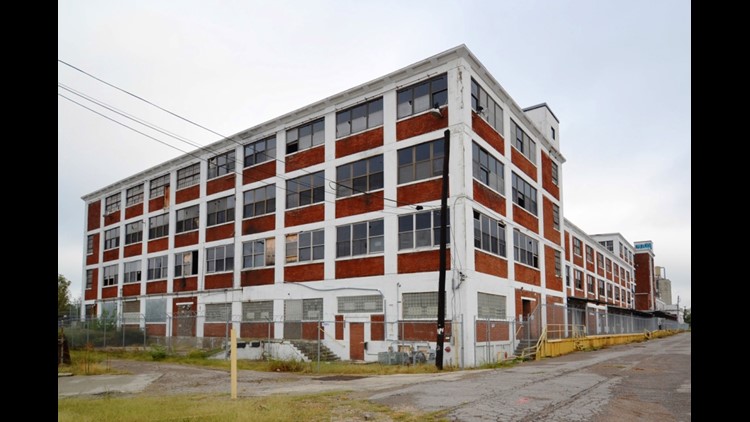The Tennessee Historical Commission today announced the addition of five properties to the National Register of Historic Places. They include a residence, former motel, library, former factory and a farmstead.
“These additions to the National Register of Historic Places are a testament to Tennessee’s diverse heritage,” said Executive Director and State Historic Preservation Officer Patrick McIntyre. “The historic properties are part of our unique past and are worthy of being recognized on this prestigious list.
The sites recently added to the National Register of Historic Places are:
Smotherman House (Tullahoma – Coffee County)
The Smotherman house was designed by Nashville architect George Waller and built in Tullahoma between 1932 and 1934. Landscape architect John Byars Holder designed the gardens at the same time. Fletcher Smotherman, a wholesale grocery businessman, moved from Murfreesboro to Tullahoma when he became part owner of the wholesale grocery and moved the company headquarters to Tullahoma. Smotherman directed Waller to design his new house to look like his former home in Murfreesboro. Both Georgian Revival Houses are two stories, red brick with classical entries, and flanked by one story extensions. The Smotherman House exhibits characteristic details of the Georgian Revival style in its symmetrical design, molded woodwork, and classical columns. In addition to being a well-known architect of residences in the South, Waller designed many school buildings, commercial buildings and churches.
Booker T. Motel (Humboldt – Gibson County)
Situated near intersecting Highways 79 and 70A, the Booker T. Motel is comprised of three buildings. There are two circa 1954 one-story concrete block motel buildings and a circa 1940 brick building that was adapted for use as an office building and restaurant. Soon after it was built, the motel was bought and operated by Velva and Alfred Pulliam to accommodate African American automobile travelers in West Tennessee. Few overnight lodgings or restaurants were available for African Americans at this time. The Booker T. Motel took advantage of advertising targeting African Americans and was seen in The Negro Motorist Green Book and Ebony magazine, both national publications. This is a rare extant example of African American entrepreneurship during the Jim Crow era.
Brownsville Carnegie Library (Brownsville – Haywood County)
Brownsville’s 1910 Carnegie Library is a one-story Classical Revival brick veneer building located near the Haywood County Courthouse. The building is one of over 1,650 libraries constructed as part of Andrew Carnegie’s national program to provide grants to communities to build public libraries. In Brownsville, the library represents the Progressive Era ideal of having free libraries. Local women’s groups worked with the city to get a public library and in 1909 the mayor requested the Carnegie library grant. Carnegie provided $7,500 with the city agreeing to provide 10% of the building cost for annual maintenance. The library was used for many years as a meeting place and had a focus on children’s education. Today the library is used as offices for the Chamber of Commerce and the Brownsville Main Street program.
American Snuff Factory (Memphis – Shelby County)
Conveniently located near the railroad, the 9 buildings that comprise the American Snuff Factory were built between 1912 and 1957. They include the curing building, warehouses and corporate offices. Memphis was considered a good location for the factory because of the easy access to rail and river transportation and proximity to tobacco farmers. Only snuff was manufactured here until 1952, when American Snuff bought the Taylor Brothers Tobacco Company and added chewing tobacco to its product line. At the height of its production in the mid-1950s, the company employed 500 people and was the second largest snuff manufacturer in the US. As the use of tobacco products in the US became less popular, the company diversified and became known as Conwood Company, LLC. Today the buildings are privately owned and awaiting reuse.
Wassom Farm (Telford – Washington County)
The Wassom Farm is comprised of the circa 1828 farmhouse, two circa 1900 farm outbuildings and 17-acres of fields and woods. Constructed of brick, the two-story farmhouse is 3-room house with a central hall plan. Federal style details are seen in the interior woodwork and include paneled doors, chair rails, wainscoting and historic fireplace mantels. Molded brick below the eaves and Flemish bond brick on the façade are important features on the exterior of the building. Around 1920 the house was updated with a one-story bungalow porch. Historically, tobacco was grown on the land while, today hay and corn are the main crops. There was a Civil War skirmish on or near the property, but the importance of the house is as an example of an early 19th-century farmhouse that retains much of its historic design.
The National Register of Historic Places is the nation’s official list of cultural resources worthy of preservation. It is part of a nationwide program that coordinates and supports efforts to identify, evaluate and protect historic resources. The Tennessee Historical Commission, as the State Historic Preservation Office, administers the program in Tennessee.
For more information, visit http://tnhistoricalcommission.org.



